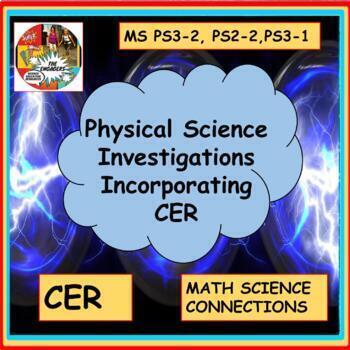Physical Science Investigations Incorporating the CER Structure NGSS Aligned
- Google Drive™ folder

Products in this Bundle (3)
Description
Do your students need more practice using the claim, evidence, reasoning structure (CER)? These three lessons will give your students the practice they need.
These three engaging investigations support the NGSS standards MS PS3-1, MS PS3-2, and MS PS 2-2.
In all three investigations, students design and perform their experiments, collect and analyze their data, and write a conclusion using the CER structure.
The science and engineering practices below are incorporated in these investigations:
Developing and using models.
Planning and carrying out investigations.
Analyzing and interpreting data.
Using mathematics and computational thinking.
Engaging in argument from evidence.
Included in this resource:
Teacher slides (92 slides)
Detailed teacher notes (37 pages)
Printable student worksheets with activity instructions (21 pages)
Sample answers including a rubric for the CER conclusion
You may also like:
Investigations into balanced and unbalanced forces MS PS2-2 CER
Investigating Newton's First Law of Motion MS PS2-2
Investigating Newton's Third Law of Motion MS PS2-1
Constructing a space station that can withstand a collision: STEM MS PS2-1
Investigating magnetic forces NGSS MS-PS2-3 MS-PS2-5 CER
Don't forget to give a review for this resource to earn TPT credits towards future purchases!
Email any questions you have with subject line “CER Investigations” to us at engagersinscience@gmail.com and we’ll be happy to answer them
Other teaching resources for sale in our Teachers Pay Teachers store can be accessed by using the link below:





